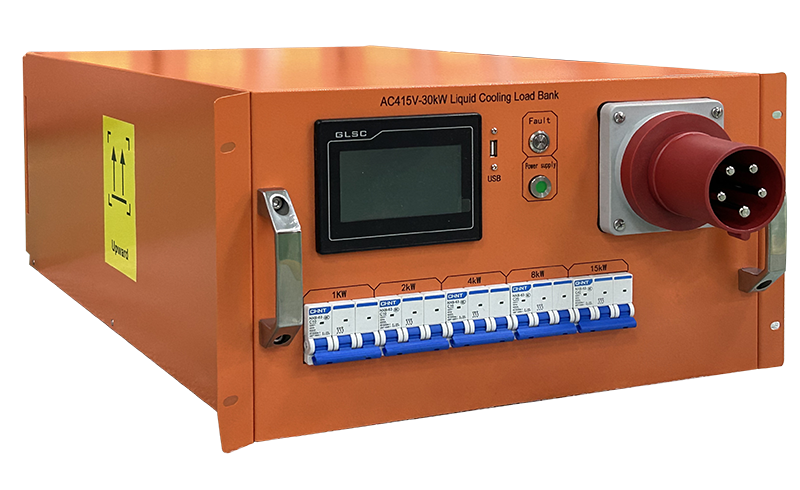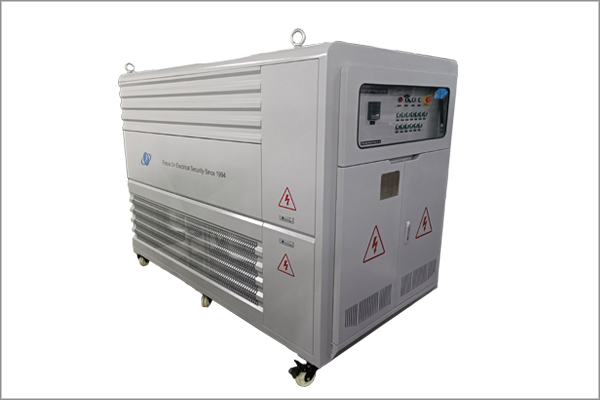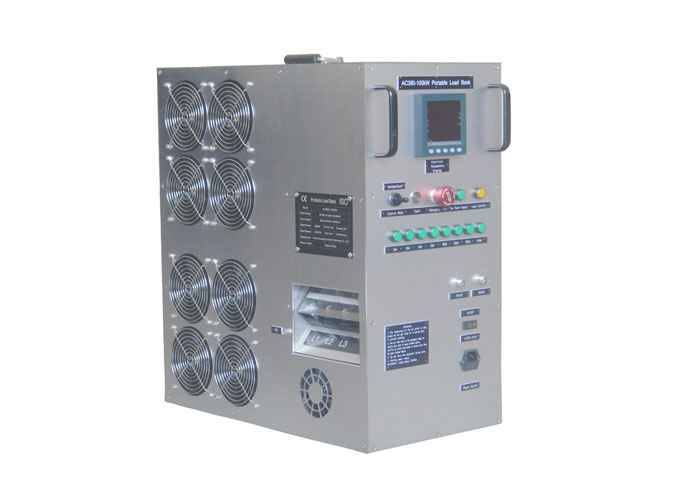As data center servers upgrade to higher density and computing power, traditional air-cooled testing equipment can no longer meet the stability requirements in high-power scenarios. With the characteristics of efficient heat dissipation and precise load control, liquid cooled load banks have become core equipment for server factory inspection, performance verification, and reliability testing. They fundamentally solve problems such as data distortion and equipment overheating in high-power testing, laying a solid foundation for the stable operation of servers.

30kW liquid load bank
In the server factory performance verification process, the core role of liquid cooled load banks is to simulate real load scenarios. Servers need to bear computing tasks of varying intensities during actual operation, with a wide range of load fluctuations. Liquid cooled
load banks can accurately adjust load power (covering 0-500kW), simulating the full scenario from low-load standby to high-load full computing power operation, and verifying the stability of the server's CPU, memory, and power output under different working conditions. For example, in cloud computing server testing, simulating the load peak during multi-user concurrent access through liquid cooled load banks can accurately detect whether the server experiences freezes, crashes, or power supply abnormalities, ensuring that the factory products meet performance standards.
Ensuring the effectiveness of the server's heat dissipation system is another key role of liquid cooled load banks. The heat dissipation efficiency of high-density servers directly affects their operating life. Liquid cooled load banks can verify the performance of the server's liquid cooling heat dissipation module through precise temperature control and heat conduction during testing. During the test, the load bank simulates the heat generation of the server under full-load operation, quickly conducts heat out with its own efficient liquid cooling system, and simultaneously monitors the temperature of the server's core components in real time. If there is a design defect in the server's heat dissipation module, the temperature will rise abnormally, and testers can promptly optimize the heat dissipation structure based on this, preventing hardware damage caused by overheating during the server's actual use.
In addition, liquid cooled load banks can also help servers optimize energy consumption and reliability. In long-term stability testing, liquid cooled load banks can simulate high-load operation continuously for hours or even days, recording the server's energy consumption changes and fault frequency. By comparing energy consumption data under different loads, enterprises can optimize the server's power management strategy and reduce operating power consumption; at the same time, continuous high-load testing can expose potential hardware compatibility issues or software vulnerabilities of the server, providing data support for subsequent iterations and upgrades, and significantly improving the long-term operation reliability of the server.
Compared with traditional air-cooled load equipment, liquid cooled load banks are more adaptable in server testing—not only can they meet high-power testing needs, but also reduce test data deviation and shorten the detection cycle through precise load and temperature control. It can be said that liquid cooled load banks have become an indispensable testing tool in the entire process of the server industry from R&D to factory delivery, providing key guarantees for the stable application of high-density servers.
 2024-09-11
2024-09-11 2023-04-21
2023-04-21 2023-04-06
2023-04-06 2022-05-05
2022-05-05 2022-05-05
2022-05-05

